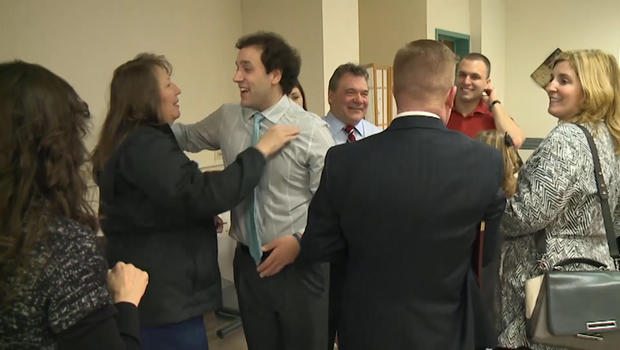You Have To Be Warm To Be Dead
"My clinical thought is very simple: you have to be warm to be dead."
"Something inside me just said, 'I need to give this person a chance'. You're not dead until you're warm and dead."
"We may have witnessed a game-changer in modern medicine -- medicine moves forward in extraordinary cases. His survival is a paradigm change in how we resuscitate and how we treat people that suffer from hypothermia."
Gerald Coleman emergency department physician, Lehigh Valley Hospital
"I looked over and there was Justin laying there. He was blue. His face -- he was lifeless. I checked for a pulse. I checked for a heartbeat. There was nothing."
Don Smith, McAdoo, Pennsylvania
 |
| A 26-year old man was nearly frozen to death last winter. His miraculous survival is drawing attention to the dangers of extreme cold temperatures to the body. Photo: Lehigh Valley Health Network/YouTube |
Justin Smith had been doing what legions of 25-year-olds do with their Friday evenings; he had been out with friends, and afterward he decided to walk home. It was cold, below zero and snowing, but that wouldn't stop a healthy young man. Although there was no word whether or not he had been drinking with his friends, on most nights out this is just what young men do. Somehow, he recalled, he must have tripped and fallen into the snow. And that was all he knew.
It took twelve hours before he was found, and when he was, he showed no sign of life and his body temperature was under 20C. "All signs lead us to believe that he has been dead for a considerable amount of time", said a paramedic calling the hospital. That's when Dr. Coleman told the paramedics to start CPR irrespective of what they assumed. The doctor remembers saying at the time: "This is probably going to be a futile effort. But I think we need to do our best for him, OK?"
Justin's father Don had gone out looking for his son after it was discovered that he hadn't returned home. He was driving along a road in the early morning when he saw boots sticking out of a snowdrift at the side of the road. His horrified dismay at the condition he found his son in can be imagined. He called 911. On arrival, emergency personnel found no signs of life and a white sheet was draped over the body, a coroner called to the scene, and state police began working on a death investigation.
The mechanics of people "freezing" is pretty well known to medical science and to those who tempt fate by mountaineers summiting the forbidding frozen heights of the world's tallest mountains. Metabolism begins its gradual decline of 5 to 7 percent matching each one-degree drop in body temperature. At 35C, two below normal, a person begins shivering uncontrollably. At 32C, lips turn blue and speech slurs. At 28C consciousness abandons the person until finally when the internal temperature plunges to 15-20C, the heart stops beating.
When this classic body chill occurs just so, the very slowing of the metabolic processes conveys a protective process shielding from additional effects of exposure; not as much oxygen is required and a state of suspended animation occurs where the person appears dead, but still can survive if rescue falls within a still-sustainable time-frame, before the heart stops. And depending on whether CPR is initiated immediately.
For two hours paramedics and emergency staff laboured to pump the man's chest, puffing breaths into his mouth. He was flown to another hospital in Allentown, Pennsylvania where doctors were equipped to pump the patient with warm, oxygenated blood in a treatment called extra-corporeal membrane oxygenation. And that evening his heart began beating without mechanical stimulus. A victory that left the concern whether or not his brain might have been affected without oxygen over a prolonged period.
Two weeks later, when Justin Smith emerged from his coma it was soon discerned that his brain had been unharmed. Exposure that he suffered on the night of February 20, 2015 did end in frostbite and his toes had to be amputated along with the smallest fingers of his hands, but he can still live a normal life after his extraordinary experience. "I consider myself a miracle", said the man determined to complete his degree in psychology.
"We've learned that there really is no temperature so low that you shouldn't try to save someone", advises University of Manitoba thermophysiologist Gordon Giesbrecht whom other scholars of hypothermia have named "Professor Popsicle".

Justin
Smith embraces members of the Lehigh Valley Hospital team who saved his
life. He returned to the hospital to thank them on Jan. 18, 2016. WNEP-TV
Labels: Bioscience, Environment, Health, Medicine, United States

0 Comments:
Post a Comment
<< Home